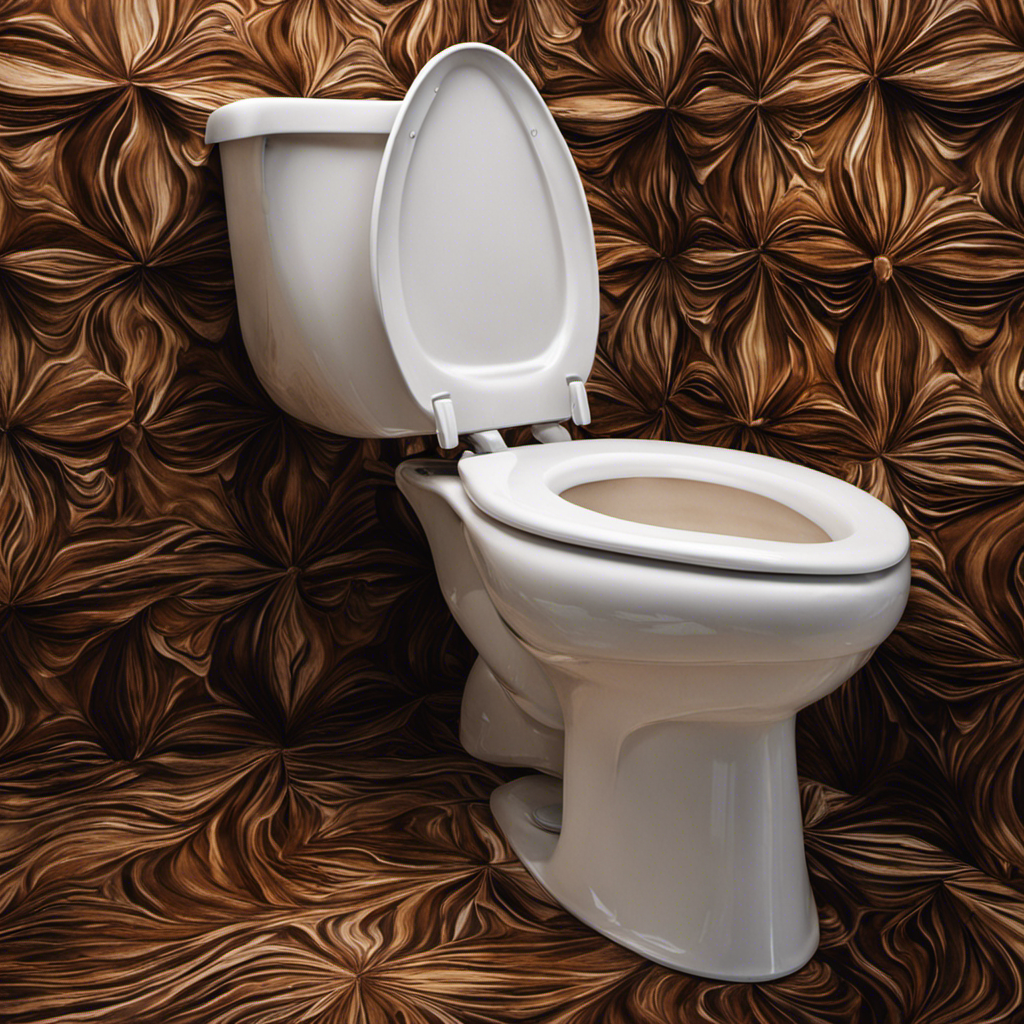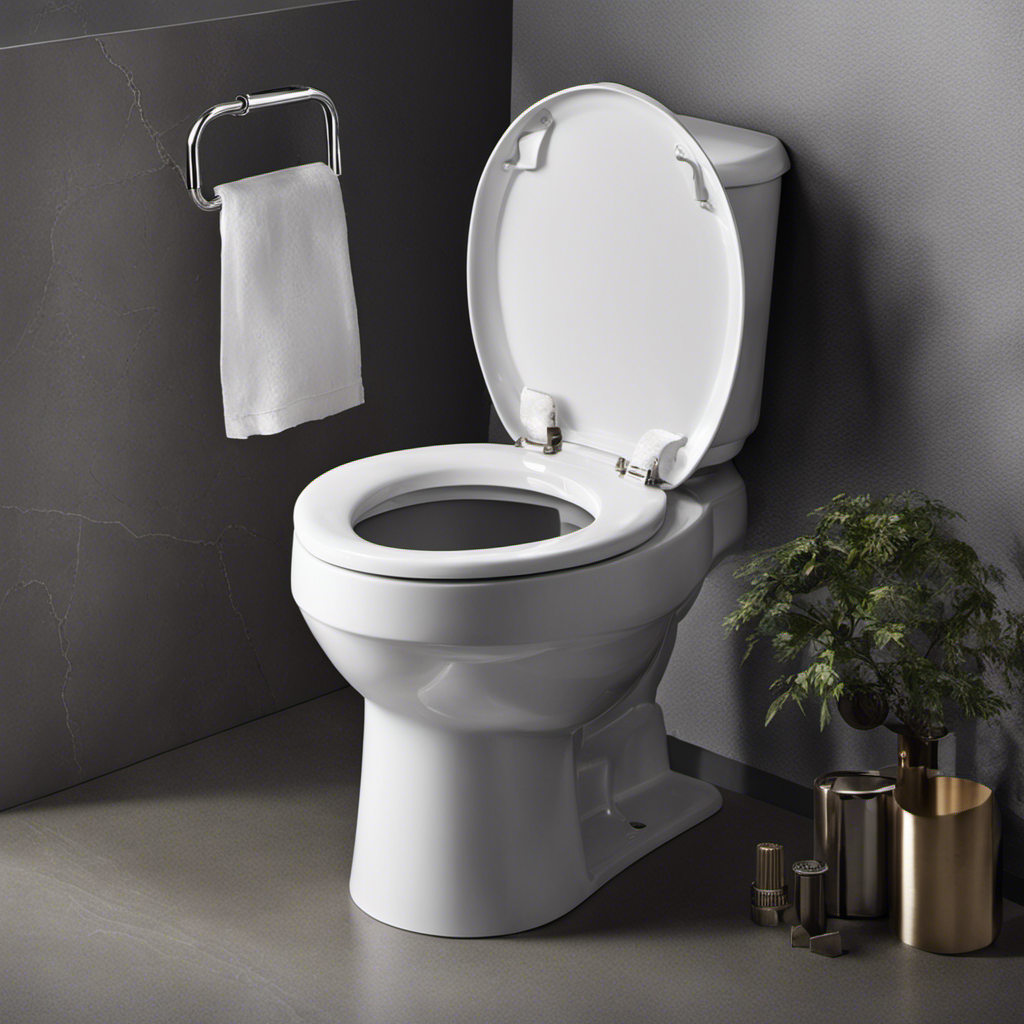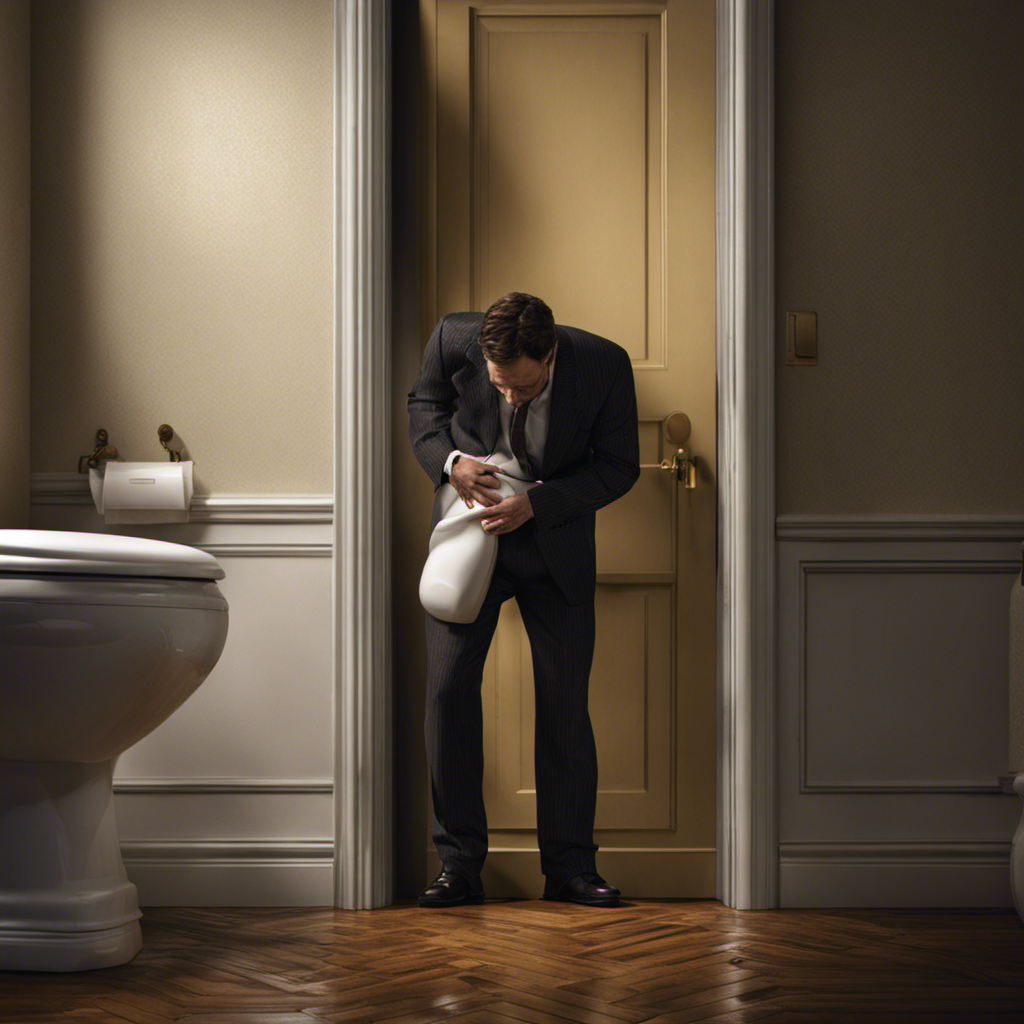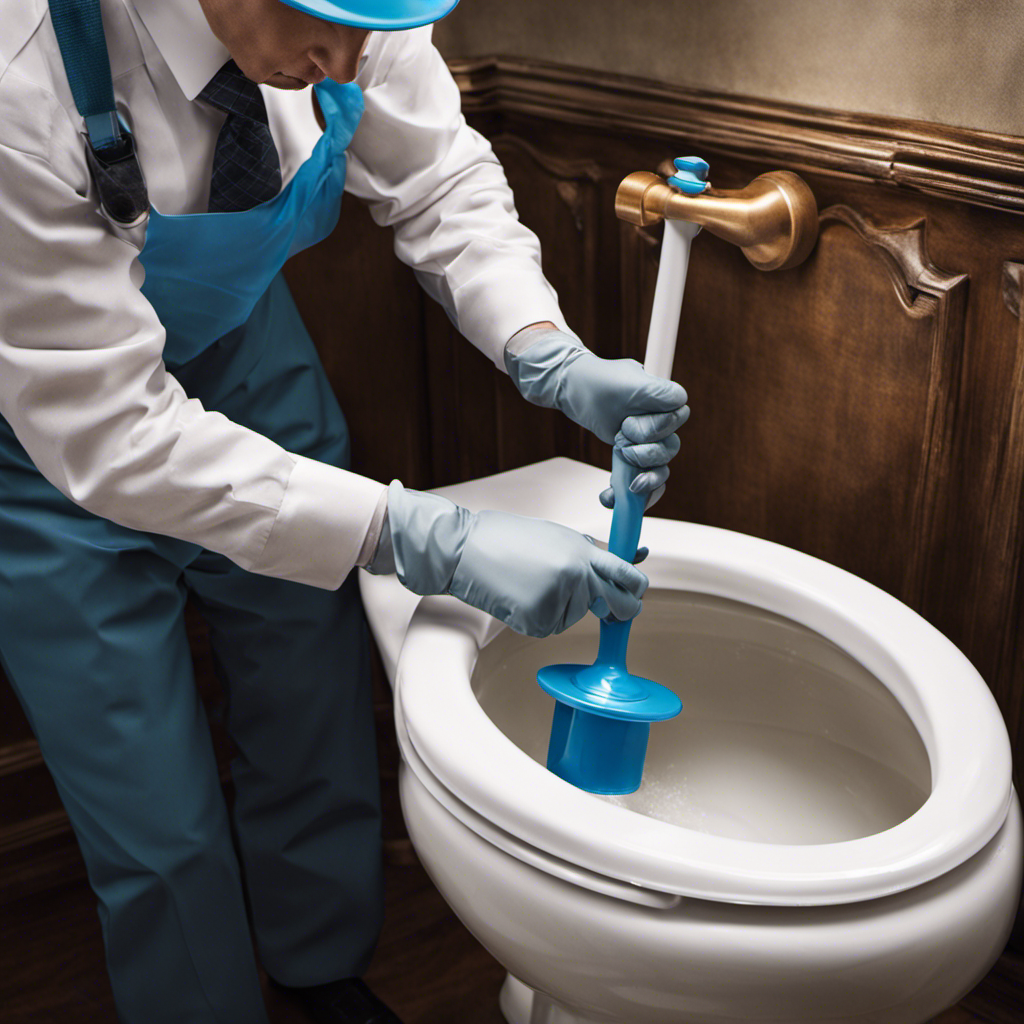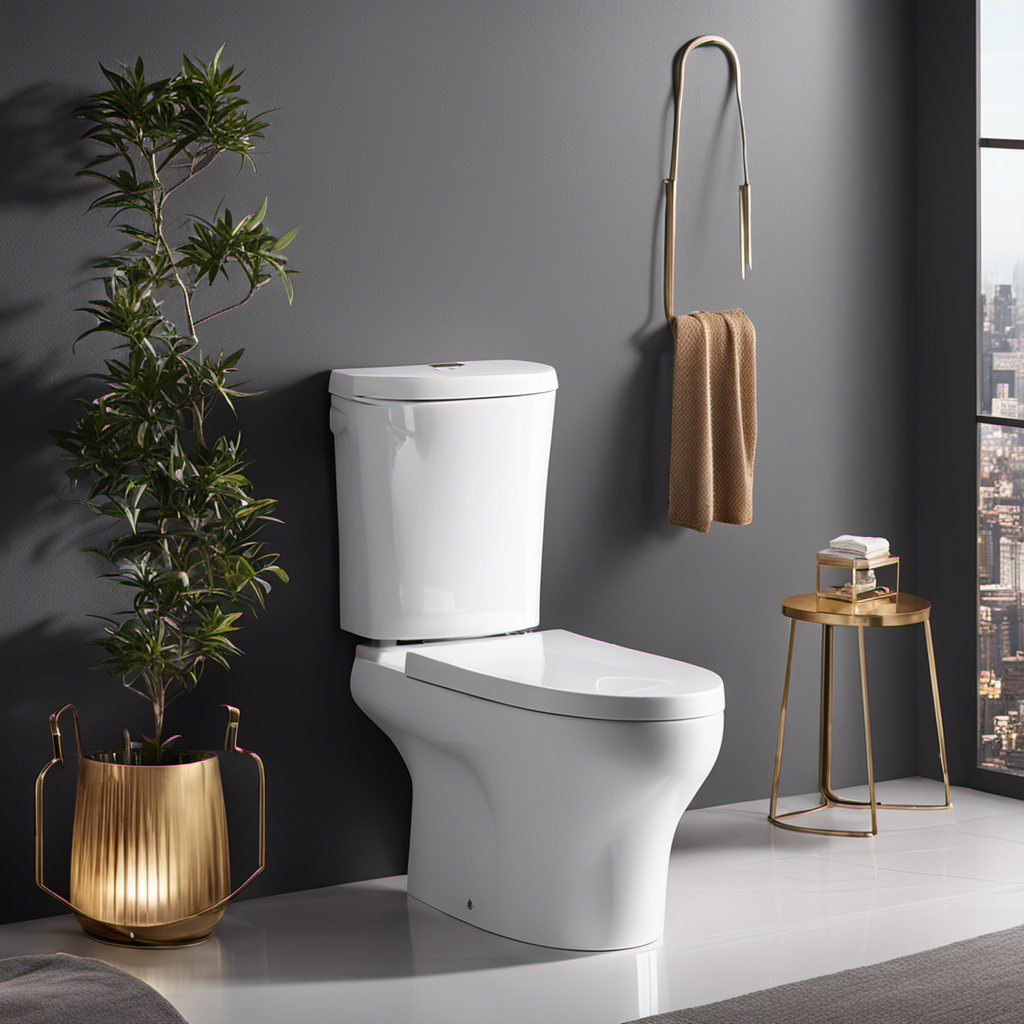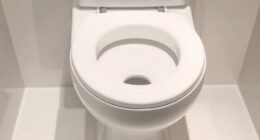As the saying goes, ‘knowledge is power,’ and when it comes to the mysterious brown stains in our toilet bowls, understanding the causes can empower us to take action.
In this article, I will delve into the various factors that contribute to these unsightly stains. From hard water deposits and mineral buildup to rust and corrosion, we will explore the technicalities behind these persistent blemishes.
Additionally, we will shed light on the role of bacterial growth and chemical reactions in creating these unwanted marks.
Get ready to discover the truth behind those brown stains in your toilet bowl.
Key Takeaways
- Hard water deposits, such as lime scale, are the main cause of brown stains in toilet bowls.
- Rust and corrosion can also contribute to brown stains in toilets, releasing iron and minerals into the water.
- Bacterial growth can lead to unpleasant odors and brown stains, highlighting the importance of regular cleaning and disinfection.
- Chemical reactions and pH imbalances caused by certain cleaning products can also result in brown stains, emphasizing the need to use appropriate cleaners and follow manufacturer’s recommendations.
Hard Water Deposits
Hard water deposits can cause brown stains in the toilet bowl. These stains are typically caused by the formation of lime scale, a hard, chalky substance that accumulates over time. Lime scale is a result of minerals, such as calcium and magnesium, that are present in hard water.
When the water evaporates, these minerals are left behind, forming a crusty layer on the surface of the toilet bowl. This layer not only creates an unsightly brown discoloration but can also make it difficult to clean the toilet effectively. The longer the lime scale is left untreated, the more it can build up and become harder to remove.
Regular cleaning and the use of descaling agents can help prevent and remove these stubborn stains, restoring the porcelain to its original color.
Rust and Corrosion
Rust and corrosion can be the culprits behind those unsightly discolorations in your toilet. When metal components in your plumbing system start to deteriorate, they can release iron and other minerals into the water supply. Over time, these minerals can accumulate in the toilet bowl, causing brown stains.
To prevent and address these issues, proper toilet maintenance is crucial. Here are four important steps to consider:
-
Regular cleaning: Use appropriate cleaning agents to remove rust and corrosion stains from the toilet bowl.
-
Inspection: Regularly check for signs of rust and corrosion in the toilet tank, pipes, and other plumbing components.
-
Repair or replace: If you notice any rusted or corroded parts, it is essential to repair or replace them to prevent further damage.
-
Water treatment: Installing a water softener or using water treatment methods can help reduce the mineral content in the water, minimizing the risk of rust and corrosion.
Mineral Buildup
Installing a water softener can help minimize mineral buildup in your toilet, reducing the risk of discoloration. Mineral buildup occurs when hard water, which contains high levels of minerals such as calcium and magnesium, comes into contact with the toilet bowl. Over time, these minerals can accumulate and form unsightly brown stains.
To prevent and remove mineral buildup, regular toilet cleaning is essential. Using stain removal techniques specifically designed for mineral stains can be effective. One method is to apply a mixture of vinegar and baking soda to the stained area, scrubbing gently with a toilet brush. Another option is to use a commercial toilet cleaner that is specifically formulated to remove mineral stains.
Regular maintenance and proper cleaning techniques can help keep your toilet free from mineral buildup and maintain its clean appearance.
Bacterial Growth
Regular cleaning and disinfecting of your toilet is essential to prevent bacterial growth. This is important because it can lead to unpleasant odors and potential health risks. To effectively clean your toilet and keep bacteria at bay, consider the following techniques and preventive measures:
-
Use a toilet brush and a disinfectant cleaner specifically designed for toilets. Scrub the bowl thoroughly, paying attention to the rim, under the seat, and around the edges.
-
Don’t forget to clean the flush handle, seat, and lid, as these areas can also harbor bacteria.
-
Regularly sanitize your toilet brush by soaking it in a mixture of water and bleach for a few minutes after each use.
-
Consider using toilet tablets or automatic cleaning systems that release cleaning agents with every flush. These can help maintain a cleaner toilet and reduce the risk of bacterial growth.
Chemical Reactions
To keep your toilet clean and prevent bacterial growth, it’s important to be aware of the chemical reactions that can occur when using certain cleaning products.
One common issue that can arise is a pH imbalance. pH is a measure of how acidic or alkaline a substance is, and a balanced pH is crucial for maintaining a clean and healthy toilet.
When using cleaning products, it’s important to read the labels carefully and ensure that they are compatible with your toilet’s surface. Some products may have a high pH, which can cause discoloration and even damage to the toilet bowl.
On the other hand, using acidic cleaners can also lead to pH imbalances and potentially harm the toilet. Always follow the manufacturer’s recommendations and use appropriate cleaning products to maintain a clean and bacteria-free toilet.
Frequently Asked Questions
Can the Presence of Brown Stains in the Toilet Bowl Indicate a Health Risk or Contamination?
Brown stains in the toilet bowl can indicate digestive issues or dietary problems. Prolonged exposure to these stains does not pose any direct health risks or contamination concerns, but it is always best to address the underlying causes.
What Are the Common Household Products That Can Be Used to Effectively Remove Brown Stains From the Toilet Bowl?
Household products like vinegar, baking soda, and bleach can effectively remove brown stains from the toilet bowl. These items have acidic or abrasive properties that break down and remove the stains.
Are There Any Specific Cleaning Techniques or Methods That Can Prevent the Formation of Brown Stains in the Toilet Bowl?
Cleaning techniques and prevention methods can help keep the toilet bowl free from brown stains. Regularly scrubbing the bowl with a toilet brush and using a toilet cleaner specifically designed to remove stains can be effective in preventing their formation.
Can Brown Stains in the Toilet Bowl Be a Sign of Plumbing Issues or Leaks?
Brown stains in the toilet bowl may indicate plumbing issues or leaks. Regular plumbing maintenance can prevent toilet bowl discoloration. Just like a canary in a coal mine, these stains serve as a warning sign.
Is There a Specific Toilet Bowl Material or Finish That Is More Resistant to Brown Stains Than Others?
Toilet bowl material and finish can affect resistance to brown stains. Durability, cleaning techniques, and prevention methods are crucial. Research different materials, such as porcelain or ceramic, to find the best option for your needs.
Conclusion
In conclusion, brown stains in toilet bowls can be caused by a variety of factors. Hard water deposits, rust and corrosion, mineral buildup, and bacterial growth are all potential culprits.
Understanding the underlying causes can help us effectively tackle and prevent these unsightly stains. By implementing regular cleaning and maintenance routines, using appropriate cleaning products, and addressing any plumbing issues, we can keep our toilets clean and free from brown stains.
So, are you ready to take the necessary steps to maintain a spotless toilet bowl?
